Sample Strategic Alliance Agreements
-
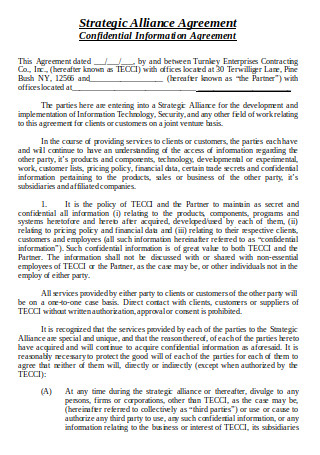
Strategic Alliance Agreement
download now -
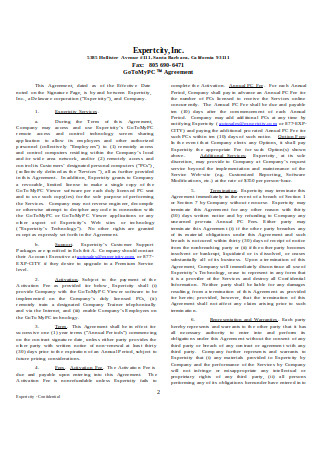
Joint Development and Strategic Alliance Agreement
download now -

Strategic Alliance Agreement Example
download now -
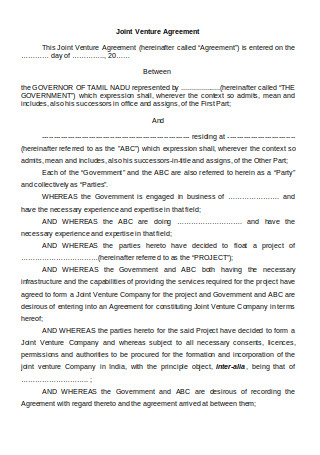
Joint Venture Agreement Template
download now -
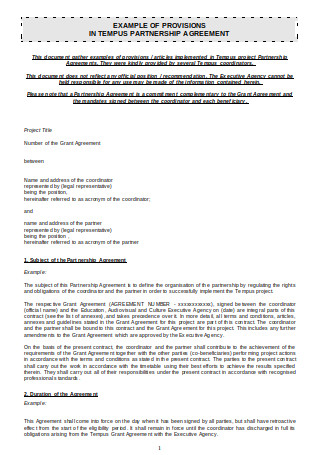
Partnership Agreement Template
download now -

Strategic Partnership Agreement
download now -

Sample Strategic Alliance Agreement
download now -
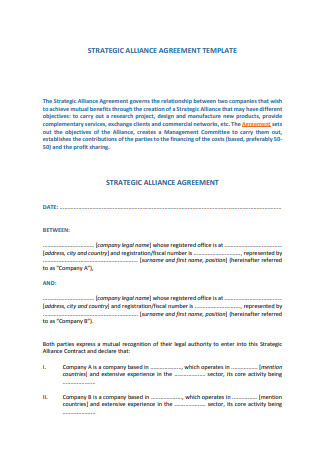
Strategic Alliance Agreement Template
download now -
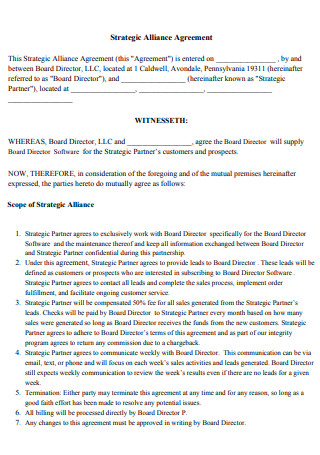
Board Director’s Strategic Alliance Agreement
download now -
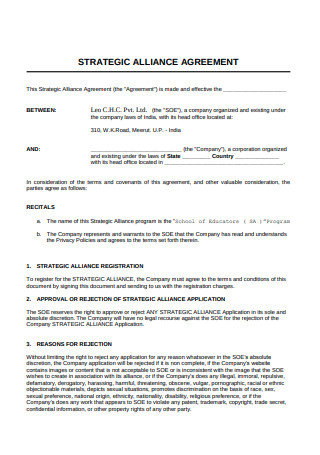
Simple Strategic Alliance Agreement
download now -

Strategic Partnership Agreement Form
download now -
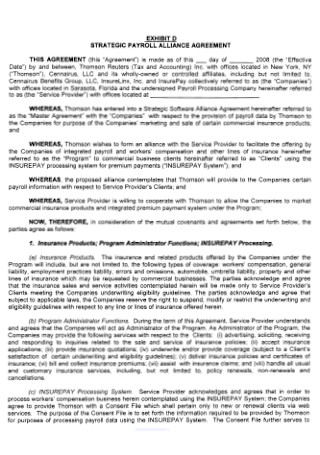
Strategic Software Alliance Agreement
download now -
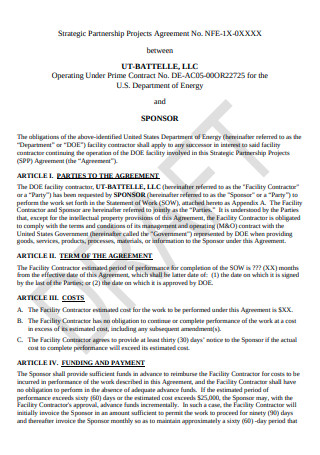
Strategic Partnership Projects Agreement
download now -
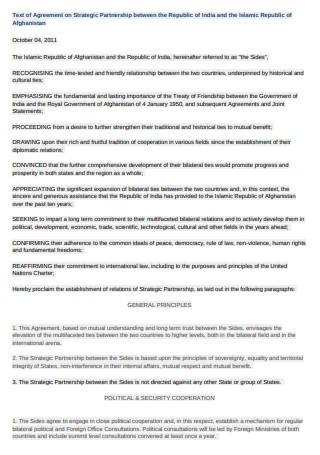
Strategic Alliance agreement Format
download now -

Agreement on Strategic Partnership Sample
download now -
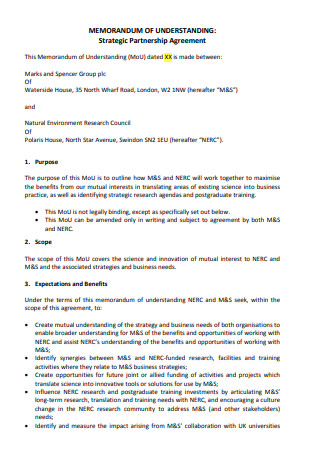
Sample Strategic Partnership Agreement
download now -
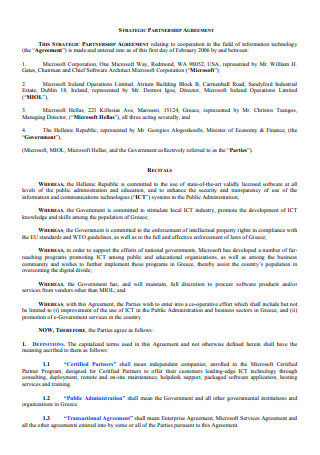
Basic Strategic Partnership Agreement
download now -
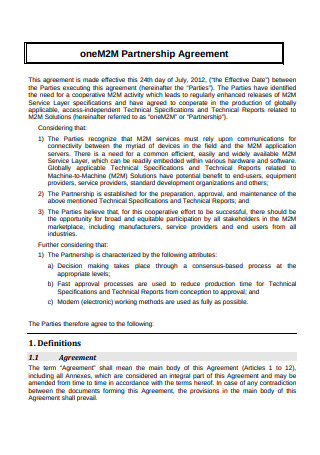
Partnership Agreement Format
download now -

Strategic Partner Agreement
download now
What is a Strategic Alliance and When is it Necessary?
Businesses take on drastic efforts to achieve a competitive edge over competitors. Some companies buy off their smaller-scale rivals to clear out the field. As for other companies, they choose to cooperate to achieve a common goal. Companies who engage in this symbiotic relationship enters a strategic alliance. Most organizations that commit to this particular alliance have several reasons. Some partnerships want to have ease of entry to a new industry, while others want to manufacture an improved product line. But, the bottom line is that both companies want to have and maintain a competitive edge.
The Different Faces of Strategic Alliance
In the current flow of the market, some experts say that venturing into strategic alliances is the way to go. With the complexity of the demands of the market, it is impossible to stay as rigid as a mountain. It is better to bend and follow the flow while maintaining a path, like a river. Partnering with beneficial organizations provides several benefits that rake in contributions for the long haul. But, in order to reap the benefits, you must engage in an alliance that perfectly fits your demand. Read on to know about the different types of strategic partnerships and some of its benefits.
What are the Pros and Cons of a Strategic Alliance?
In the natural order of things, a situation presents itself in two different ways. There is a black and white side to different scenarios. Likewise, strategic alliances are not an exemption to the general rule. Here are some of the significant pros and cons of committing to this partnership. This list will help you weigh your options if you are thinking about starting an alliance.
Pros
Efficient Goal-setting Technique
Two minds are better than one. This use of this maxim is part of the everyday interactions in the academe. It also stays true in several other situations, including business transactions. A primary advantage of engaging in a strategic alliance is it shortens the period of achieving several objectives. Regardless of the nature of the goals that both companies share, the partnership makes way for efficient goal-setting. If company A’s goal is to reach out to a broader audience, it is best to set to ally and set goals with a company with a large following. Or if several companies aim to cut costs, it is best to join forces with companies who have the latest technology and equipment that are necessary for the other organizations’ production. The efficiency of goal-setting in these situations rely on choosing the best possible partner.
Develops a Competitive Edge
One strategic alliance that withstood the test of time is the partnership of Starbucks and Barnes & Noble. Barnes & Noble was facing the problem that all physical retail stores encountered. The emergence of online stores was a threat to most brick and mortar stores, regardless of their product. In the midst of it all, the bookstore decided to pair up with the coffee shop that was a staple in most areas-Starbucks. It was a match made in heaven. A book lover’s imagination of a picture-perfect afternoon is one with books and a good cup of joe. With the companies’ strategic alliance, the scenario no longer remains as an imagination. Almost all of Starbucks locations have book nooks care of Barnes & Noble. The ingenuity of this partnership raked in more customers and encouraged them to stay for longer hours because of the cozy ambiance. The bookstore was able to withstand the crisis because no online store can ever provide the appeal and comfort that the alliance brings.
Reduces Risks and Threats
One of the primary reasons for committing to a strategic alliance is to secure ease of entry. Entering new industries also poses a significant threat. The existing rivalry in the industry can heighten the difficulty of entry. For example, new players in the airline industry are slow to come by. The best strategy for companies to penetrate the industry is by partnering with one of the established airline brands. A strategic partnership with one of these brands will lessen the potential risks, such as premature termination of operations. A smart alliance also minimizes the risk of mismanaging current resources.
Cons
Misinterpretation of Benefits
One possible disadvantage of fostering new alliances is the misinterpretation of the benefits that each company can contribute. One party may develop an exaggerated understanding of what the other party can offer. Say, for example, company A expects company B to provide more resources plus equipment, but company B is not capable. The exaggerated expectation of company A may stem from misunderstanding company B’s statement. A simple misunderstanding could lead to the downfall of the partnership.
Misuse of Resources
Another con to take note of upon entering strategic alliances is the possible misuse of resources. The partnership between two independent companies means that there is a pool of high-ranking officials who want to implement the rules. In this situation, where a significant number of people want to lead, some may resort to improper management of resources. Another possible scenario that can result in misuse of property is when both parties cannot decide on a standard method to reach the shared goal. As a result, each party would want to cash out resources to implement their preferred practices and, ultimately, waste more than following a failed plan.
Reduces the Sense of Accountability
The last thing that you would want to happen in an alliance is when people from both organizations lose their sense of responsibility while working on the goal. This scenario is more common than it seems. In fact, a theory in Psychology can explain this phenomenon. The bystander effect explains that the sense of responsibility diminishes when more people share the same role. When taken into the scene of strategic alliances, the employees from both companies share similar responsibilities. This similarity develops to thinking that they have a free pass and not do their role as someone else can do it for them.
On the other hand, long-standing strategic alliances develop a dependent relationship. Both parties result in being more dependent on each other. As a result, the alliance loses its strategic edge, and it becomes a traditional business partnership.
How to Build a Beneficial Strategic Alliance
Who would have thought that collaboration will bring in a competitive advantage in the business sector? As the fourth wave of the Industrial Revolution rolls in, cooperation became a vital factor for a company’s success. As corporate giants started the movement to collaborate with other brands, smaller-scale companies began to follow suit. If you decide to follow the trail, here is a short process on how you can establish a beneficial alliance for your organization.
Step 1: Conduct a Company Analysis
The ideal first step before engaging in a strategic partnership is to analyze the workings of your organization. An easy SWOT analysis could produce conclusions that can help you find the ideal companies to work with. Having a list of your company’s strengths can help you build your pitch as you look for a partner. The details of the organization’s weaknesses and threats will help the company groom up their image. Most importantly, a list of viable opportunities can be the basis of the company’s goals. These goals are then the basis for companies in partnering with other organizations.
Step 2: Work with the Ideal Partner
Work with a partner that can fill your organization’s gaps. The question here lies on how to find a suitable partner company that will work as hard as you will. First, it is crucial to scout for institutions that have already set their roots in the target industry. After that, examine their company’s profile. Determine their short term and long term goals. Thoroughly consider what your company needs the most and find all the possible partners that can effectively fill the gap. Your prospect partner also brings in shortcomings. Always remember that you need to work with that too. It is still better to focus on their positive contributions while developing ways on how to handle with their shortcomings.
Step 3: Decide on the Methodology
Once you decide on a particular company to pair up with, it is time to determine how to navigate the partnership. You can decide on what methods and techniques to use to make the alliance work. A vital decision to make for each organization is to choose the types of information to disclose. Contrary to a common notion, the complete disclosure of the company’s sensitive information is not necessary for a partnership to work. Each organization can filter the details that it will disclose, making sure that the data made available are essential for achieving the shared goal.
Agreeing on the possible projects and settling on the designation of the roles early on the partnership are signs of a beneficial strategic alliance. Deciding on the possible methodology for companies to choose to work on will also start the talks about the allocation of resources. It will open the conversation about which party will be responsible for what task. It will also determine the priority tasks.
Step 4: Establish Open and Transparent Communication
In any partnership, transparent communication is necessary. Both parties can utilize a SWOT analysis to determine the risks and threats primarily. An organization that agrees to enter a strategic alliance knows what they want from the onset. Both organizations know that they will never settle for less than what they already have and what they want to achieve. Open communication during the alliance also aids in coping with sudden changes and unpredictable events. An exchange of thoughts and opposing ideas between the partners can lead to a more productive collaboration.
Step 5: Stay Committed to the Goal
Long term strategic alliances often fall into a hole where it loses its competitive edge. Similar to a pack of wolves who loses motivation in following their leader after a long time, the employees of the companies can lose touch to the original goal of the alliance. The strength of an alliance relies much on the shared vision. Therefore, everyone must know how their role is related to the overall goal. Regardless if there are changes in the methods, techniques, and tools, the collaboration remains if everyone stays committed to achieving the objective.
Like all critical business decisions, strategic alliances can either make or break a company. Now, you have the necessary knowledge to decide whether your organization is capable of entering a strategic alliance. You can utilize these ready-made templates and samples to jumpstart your process.
